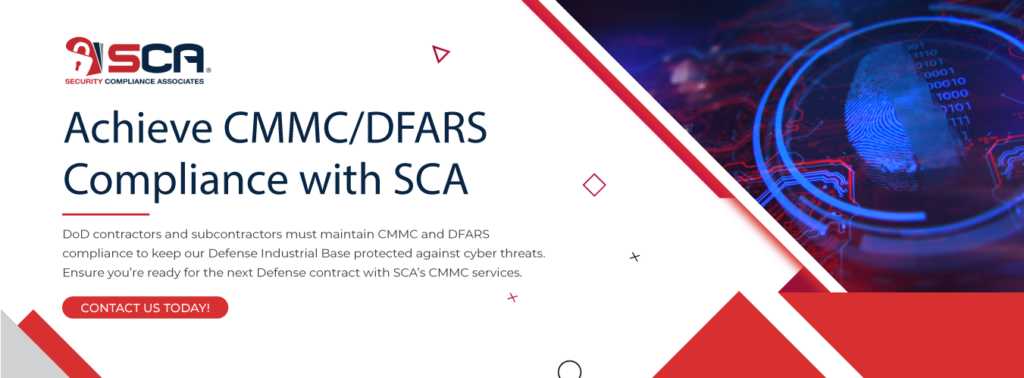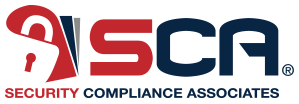
CMMC Training: Compliance for Contractors
The Cybersecurity Maturity Model Certification (CMMC) serves as the Department of Defense’s official validation of independent contractors’ ability to safeguard sensitive data. This certification is crucial for the myriad of small, medium, and large companies nationwide engaged in projects with the DoD. Attaining a robust security maturity rating can significantly impact whether these companies secure contracts with the DoD or face the possibility of being overlooked.
For these companies, achieving a high security maturity rating through CMMC is not just a checkbox requirement; it can be the decisive factor determining whether they secure coveted contracts with the Department of Defense or face the potential consequence of being overlooked in the competitive procurement landscape. In essence, the level of adherence to cybersecurity standards outlined by CMMC becomes a critical benchmark that can directly influence the success or challenges these companies encounter in their dealings with the DoD.
Download the CMMC Compliance Checklist Now
As such, the certification process becomes an instrumental measure in establishing and maintaining a robust cybersecurity posture, reinforcing the significance of cybersecurity practices in the context of national defense initiatives. Working with cybersecurity professionals who have undergone explicit CMMC training can go a long way to ensuring your organization is meeting all of the requirements for your designated level.
What is CMMC Certification?
CMMC certification involves an assessment of a company’s cybersecurity processes and implementation to ensure they align with the requirements outlined in the CMMC framework. Today, CMMC has three levels (formerly there were five), and they are Level 1, basic cyber hygiene, Level 2, advanced cyber hygiene; and Level 3, expert cyber hygiene. The CMMC maturity level your organization must meet and its compliance and assessment requirements will depend on the sensitivity of the data you’ll be working with.
How Do Contractors Comply With CMMC?
The DoD will verify contractors’ compliance in 3 ways: Annual Self-Assessment: Required for CMMC Level 1 and only select programs within Level 2. Triennial 3rd-Party Assessment by C3PAO: Required for CMMC Level 2. Government-Led Assessments: Required for Level 3. The number of required practices corresponding with your respective CMMC level will range from 17 to ~140. Contractors can find their required CMMC level specified in solicitations or Requests for Information (RFIs).
To help organizations get started, the DoD has some additional suggestions to help support the mandatory CMMC requirements. They outline some of the best practices that organizations should focus on.
First is education. In the realm of cybersecurity, user error stands as a primary catalyst for most cyber incidents. It is imperative for organizations, particularly those seeking government contracts and adhering to the CMMC, to prioritize user education. By imparting knowledge on the significance of setting robust passwords, recognizing and avoiding malicious links, and promptly installing the latest security patches, organizations can fortify their defense mechanisms against cyber threats.
Empower Your Workforce With SCA and Phished.io Now
CMMC compliance mandates a proactive approach to cybersecurity, emphasizing the need for a well-informed user base. Strengthening these fundamental aspects of digital hygiene enhances an organization’s overall security posture and bolsters its eligibility and preparedness for government contracts. As organizations align their cybersecurity practices with CMMC requirements, investing in user education is pivotal in fostering a resilient and secure digital environment.
Next, the DoD highlights the importance of limiting access controls. Effectively managing access controls is a critical aspect of cybersecurity, aiming to restrict information systems access exclusively to authorized users and their designated actions. Organizations can mitigate the risk of unauthorized entry and potential data breaches by implementing stringent access limitations. This strategy ensures that users are granted access only to the information and functionalities essential for their designated roles, minimizing the likelihood of misuse or accidental exposure of sensitive data. Limiting access controls enhances overall system security and aligns with best practices for safeguarding confidential information. This proactive approach is a fundamental pillar in fortifying the integrity and confidentiality of an organization’s digital assets.
Multi-factor authentication is also a great way to stay ahead with CMMC. Multi-factor authentication enhances security by requiring multiple forms of identification before granting access, adding an extra layer of protection against unauthorized access and potential security breaches. Implementing MFA tools involves verifying identity through a combination of factors such as passwords, biometrics, smart cards, or one-time passcodes. This approach significantly strengthens the authentication process, mitigating the risk of compromised credentials and unauthorized access to sensitive information.
Physical space monitoring is also suggested. Install high-quality surveillance cameras strategically throughout the premises to monitor key areas. Ensure coverage of entry points, sensitive locations, and areas with valuable assets. Regularly check and maintain the functionality of cameras to guarantee continuous monitoring. Utilize access control systems to regulate and monitor entry to different areas within the facility. Implement card readers, biometric scanners, or other authentication methods to ensure only authorized personnel can access specific zones.
Finally, the DoD suggests ongoing systematic updates. Stay vigilant about ongoing updates by downloading the latest security patches whenever new releases become available. Verifying that these updates originate from a reliable and trusted source is crucial. Double-checking the authenticity of the source ensures that the downloaded patches are legitimate and not compromised, contributing to the continuous enhancement of your system’s security. Regularly updating your software and systems is a fundamental practice in maintaining resilience against emerging threats and vulnerabilities.
General Compliance Best Practices
Working with a certified security provider can help ensure your organization completely aligns withe CMMC requirements. Conduct a CMMC readiness assessment for the applicable CMMC level. Done correctly, a readiness assessment is performed with similar rigor and scrutiny as the CMMC assessment for certification. The value of this exercise is uncovering those blind spots that would stop your CMMC certification assessment until such time as remediation was complete. It can be an expensive process for a C3PAO to start, stop and restart a CMMC assessment. Additional costs from this potential error are time and revenue lost from actively participating in eligible contracts.
Develop clear and comprehensive policies and procedures that outline the organization’s commitment to compliance. These documents should be easily accessible to employees and regularly updated to reflect changes in laws or regulations. Ensure that employees understand the importance of compliance, the specific regulations relevant to their roles, and the potential consequences of non-compliance.
Finally, foster a culture of continuous improvement by regularly evaluating and updating compliance processes. Learn from incidents and use them as opportunities to enhance the effectiveness of compliance measures. By incorporating these best practices into their operations, organizations can build a strong foundation for compliance, reduce risks, and promote a culture of ethical conduct and accountability.


